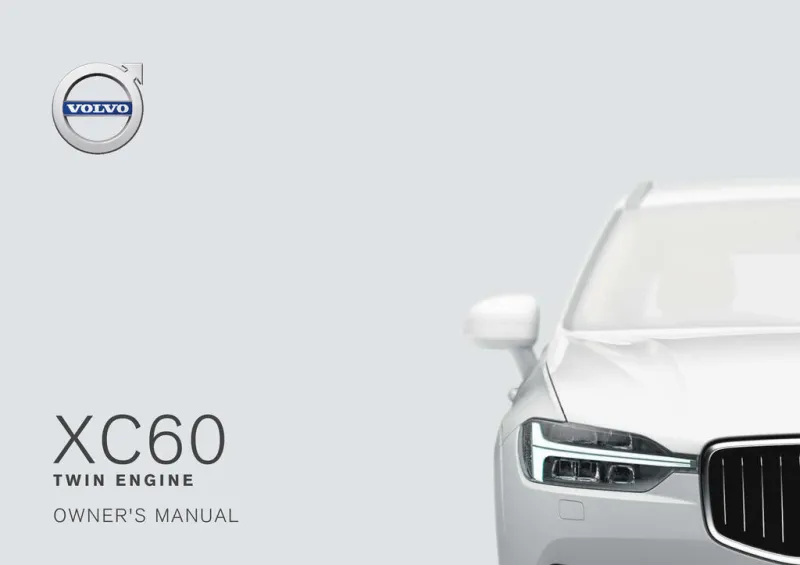2019 Volvo Xc60 Twin Engine Owner's Manual

Table of Contents
2019 Volvo Xc60 Twin Engine Overview
Introduction
The 2019 Volvo XC60 Twin Engine epitomizes the perfect blend of luxury, performance, and sustainability in a compact SUV format. With its sleek Scandinavian design and advanced hybrid technology, it promises a refined driving experience that does not compromise on power or efficiency. From urban driving to weekend getaways, the XC60 Twin Engine is built to elevate your adventures while fostering a more eco-friendly future.
Powertrains
The XC60 Twin Engine is equipped with a sophisticated hybrid powertrain that combines a 2.0-liter turbocharged 4-cylinder gasoline engine with an electric motor. This dynamic duo delivers an impressive combined output, ensuring swift acceleration and agile handling while promoting fuel efficiency. The plug-in hybrid system enables the driver to switch effortlessly between electric-only driving for short commutes and the robust gasoline engine for longer trips, making it a versatile option for all lifestyles.
Trims
The 2019 Volvo XC60 Twin Engine is available in a variety of trims, including the Inscription, R-Design, and Momentum. Each trim offers a distinct array of luxury features, technology enhancements, and personalized interior options, allowing owners to select the configuration that best suits their tastes and needs. From premium leather upholstery and a panoramic sunroof to sport-tuned suspension and advanced safety technologies, the XC60 Twin Engine caters to those who demand the best in both style and functionality.
Features
A highlight of the XC60 Twin Engine is its wealth of advanced features. The intuitive Sensus infotainment system provides seamless access to navigation, music, and vehicle settings via a crisp touchscreen interface. Safety is paramount, with standard features including Pilot Assist, Lane Keeping Aid, and a comprehensive suite of airbags. The spacious interior offers ample cargo space and versatility, ensuring that practicality is also a priority.
Owner's Manual
The owner's manual for the 2019 Volvo XC60 Twin Engine serves as an indispensable guide to understanding the vehicle's systems and features. It includes detailed information on hybrid functionality, maintenance schedules, and tips for maximizing efficiency. Accessible in both printed and digital formats, this manual is designed to help owners navigate their driving experience more confidently and effectively, ensuring that every journey is both enjoyable and informed.
User manual download
The Volvo Xc60 Twin Engine owner manual for the 2019 model year is to be found in PDF downloadable format on this page. The owner manual for the model year 2019 is free and in English, but the repair manuals are usually not easy to get and may cost more.
Manual Questions
Fill the form below and someone will help you!
